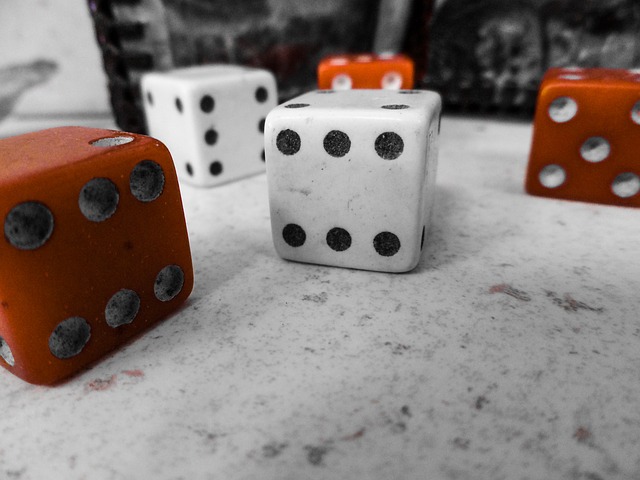Learning Outcomes
- Describe a sample space and simple and compound events in it using standard notation
- Calculate the probability of an event using standard notation
Learning new Math vocabulary and notation
You’ve seen before that learning mathematics is similar to learning a new language — it takes repetition and practice to obtain new vocabulary and symbols. Probability is no different. The set of vocabulary and symbols used in probability will likely be completely unfamiliar to you unless you’ve studied probability before. Remember to read the text with your pencil, write out the terms, definitions, and practice problems multiple times in order to learn them. You’ll need to spend time with these new ways of thinking to make them your own.
If you roll a die, pick a card from deck of playing cards, or randomly select a person and observe their hair color, we are executing an experiment or procedure. In probability, we look at the likelihood of different outcomes.

We begin with some terminology.
Events and Outcomes
- The result of an experiment is called an outcome.
- An event is any particular outcome or group of outcomes.
- A simple event is an event that cannot be broken down further
- The sample space is the set of all possible simple events.
example
If we roll a standard 6-sided die, describe the sample space and some simple events.
Basic Probability
Given that all outcomes are equally likely, we can compute the probability of an event E using this formula:
[latex]P(E)=\frac{\text{Number of outcomes corresponding to the event E}}{\text{Total number of equally-likely outcomes}}[/latex]
examples
If we roll a 6-sided die, calculate
- P(rolling a 1)
- P(rolling a number bigger than 4)
This video describes this example and the previous one in detail.
Let’s say you have a bag with 20 cherries, 14 sweet and 6 sour. If you pick a cherry at random, what is the probability that it will be sweet?
Try It
At some random moment, you look at your clock and note the minutes reading.
a. What is probability the minutes reading is 15?
b. What is the probability the minutes reading is 15 or less?
Cards
A standard deck of 52 playing cards consists of four suits (hearts, spades, diamonds and clubs). Spades and clubs are black while hearts and diamonds are red. Each suit contains 13 cards, each of a different rank: an Ace (which in many games functions as both a low card and a high card), cards numbered 2 through 10, a Jack, a Queen and a King.
example
Compute the probability of randomly drawing one card from a deck and getting an Ace.
This video demonstrates both this example and the previous cherry example on the page.
Certain and Impossible events
- An impossible event has a probability of 0.
- A certain event has a probability of 1.
- The probability of any event must be [latex]0\le P(E)\le 1[/latex]
Try It
In the course of this section, if you compute a probability and get an answer that is negative or greater than 1, you have made a mistake and should check your work.
Candela Citations
- Revision and Adaptation. Provided by: Lumen Learning. License: CC BY: Attribution
- Math in Society. Authored by: Open Textbook Store, Transition Math Project, and the Open Course Library. Located at: http://www.opentextbookstore.com/mathinsociety/. License: CC BY-SA: Attribution-ShareAlike
- dice-die-probability-fortune-luck. Authored by: jodylehigh. Located at: https://pixabay.com/en/dice-die-probability-fortune-luck-219263/. License: CC0: No Rights Reserved
- Basics of Probability - events and outcomes. Authored by: OCLPhase2's channel. Located at: https://youtu.be/37P01dt0zsE. License: CC BY: Attribution
- Basic Probabilities. Authored by: OCLPhase2's channel. Located at: https://youtu.be/EBqj_R3dzd4. License: CC BY: Attribution
- Question ID 7130. Authored by: WebWork-Rochester, mb Lippman,David. License: CC BY: Attribution. License Terms: IMathAS Community License CC-BY + GPL
